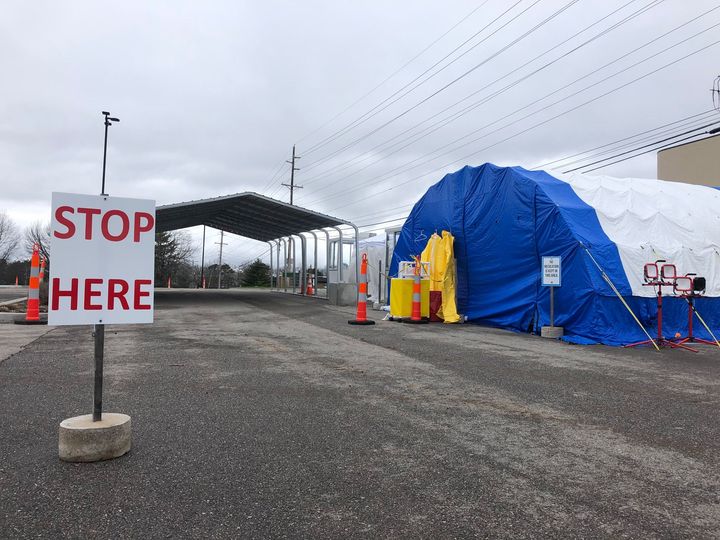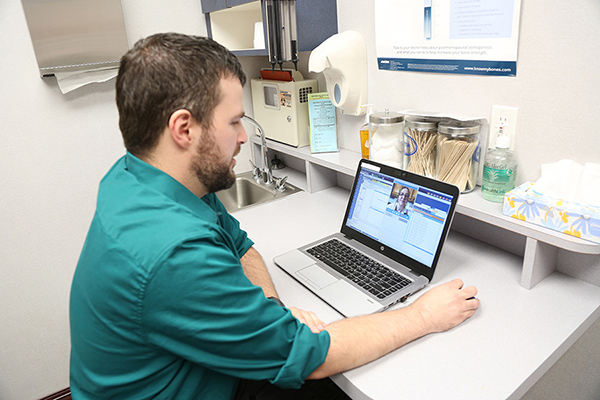Published on March 19, 2021
Read Time: Five Minutes
On March 23, 2020, the Missouri State Public Health Laboratory notified Phelps Health of its first confirmed case of COVID-19.
That case was one of 3,804 positive COVID-19 cases reported by Phelps Health between last March and March 1, 2021.
As Missouri and local communities mark the one-year anniversary of the COVID-19 pandemic this month, three Phelps Health administrators took time to reflect on the numerous changes over the past year.
From finding new ways to secure personal protective equipment (PPE) to ensuring patients still received care during the shutdown, Phelps Health leaders say there have been many lessons learned from the pandemic.
Early Days
Ever since COVID-19 was first identified in December 2019, Phelps Health leadership had been monitoring the disease and began discussions of precautions before the first confirmed cases were reported in Missouri.
Since COVID-19 was a new disease, there was much to be learned about how the virus spread and what precautions should be taken.
Nathan Ratchford, MD, senior vice president and chief medical officer of Phelps Health Hospital, said as more was learned about the virus that causes COVID-19, state and federal guidance changed to reflect the new information.
“There was a lot of conflicting reports about different things, and we really came together to do the best that we could with the situation,” he said.
Throughout the pandemic, Phelps Health CEO Ed Clayton said Phelps Health has followed guidance from the Centers for Disease Control and Prevention (CDC) and will continue to follow its recommendations.
In March, a respiratory screening station was quickly set up in a parking lot to begin testing individuals for COVID-19. In addition, staff converted several units and floors at the hospital to expand capacity for the care of COVID-19 patients.

Senior Vice President and Chief Nursing Officer Keri Heavin said this past year showed “how flexible our staff had to be to adjust to the demands during the pandemic.”
Clayton agreed, adding that he was impressed at how quickly employees were able to adjust.
For instance, when supply chains for necessary healthcare equipment became disrupted, Clayton said, “our team did a fantastic job of finding different ways and channels to acquire supplies that were necessary to safely take care of patients.”
In addition, the amount of PPE and other donations from the community to Phelps Health was overwhelming, Clayton noted.
Telehealth
In the spring, Phelps Health, like many other healthcare organizations, began putting visitor restrictions in place and delayed certain elective procedures, as recommended by the CDC.
However, Phelps Health leaders wanted to ensure that patients who needed the proper care received it in a safe and effective way. So, telehealth visits started being offered for patients to remotely visit with their care providers using computers or smartphones.
Implementing telehealth was already one of the goals included in Phelps Health’s strategic plan before the pandemic began.

“What the pandemic caused us to do was to turn a decision that was going to be made over months -- maybe years -- to a decision that was made in weeks,” Clayton said. “Telehealth is a way for us to safely interact with patients, when it is appropriate, and is impactful on people's health.”
Clayton said he learned that telehealth is an important tool for health systems to offer “and that we can, in fact, provide quality healthcare using that technology in the right scenarios.”
COVID-19 Peak
While COVID-19 cases peaked early in other parts of the country, the positivity rate at Phelps Health remained fairly low until the fall of 2020. In September, the positivity rate of COVID-19 cases was around 14% and jumped to around 27% in November and December.
Several Phelps Health employees contracted the disease and had to quarantine or isolate.
In addition, the number of COVID-19 hospitalizations and deaths also spiked in the last few months of 2020.
A total of 1,031 patients were hospitalized due to COVID-19 from March 1, 2020, to March 1, 2021, and 76 Phelps Health patients died from the disease in that same time frame.
The high volume of patients and cases meant that Phelps Health care staff also were more busy than ever.
“We went from not having any patients to [being] overwhelmed with patients, and they [our employees] adjusted every step of the way,” Heavin said. “I think we learned…what we are capable of, which was more than we ever thought.”
Heavin said Phelps Health care teams worked hard to handle things that they would not normally experience or see.
Vaccines Arrive
During the last week of December, Phelps Health received its first shipment of the Pfizer-BioNTech vaccine. Frontline healthcare workers, including doctors and nurses, were among the first employees to receive the shot that week.
Since then, a total of 12,478 vaccines have been given at Phelps Health (including about 7,817 first doses and 4,661 second doses) through March 1, 2021.
Heavin said while there were many unknowns about the vaccine at the time, “I quickly realized how important the vaccine is because COVID-19 is so unpredictable.”
Heavin noted that several people who contracted COVID-19 have had lasting effects, and some still have health issues due to the virus.
“If the vaccine can prevent that, in my mind, it's worth it,” she said.
Clayton called it a “big day” when the vaccine came to Phelps Health.
“I was so grateful when it was here, because…while other places had it before us, there were a lot of other places that didn’t yet,” Clayton said.
Looking Forward
After a year full of changes, the vaccines are offering some hope for a return to normal life. However, many people wonder, what will a post-pandemic world look like?
“I think everyone hopes that we will go back to normal like what we were in December of 2019, and that would certainly be our goal,” Dr. Ratchford said, “but it's just too early to tell.”
Dr. Ratchford said looking forward, “we're going to do…what we've done this whole pandemic. We're going to try to do the right thing.”
While Phelps Health leaders are unsure when certain guidelines like mask wearing, screening stations and social distancing will no longer be necessary, other changes throughout the organization may continue after the pandemic ends.
For Phelps Health employees, holding virtual or Zoom meetings and allowing certain employees to continue working from home, when appropriate, could continue in the future, Clayton noted.
For More Information
Learn more about COVID-19 and vaccinations.